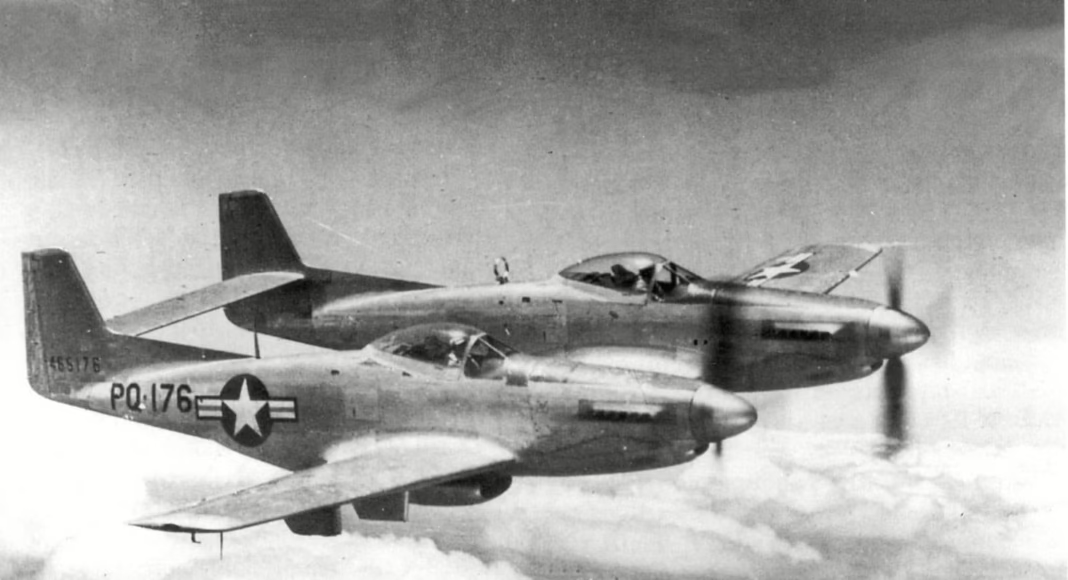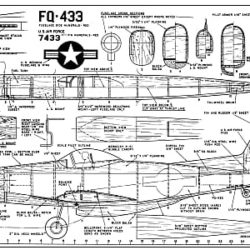North American P-82B Twin Mustang historical facts
NAA received an initial contract on March 1944 from the USAAF for 500 Twin Mustangs that would be designated North American P-82B Twin Mustang (NA-I23). These would be powered by V-1650-23/25 engines as in the two XP-82 prototypes (although ‘handed’ -19 or -9/-21 engine appear to have been specified, and it seems likely that some, if not all, of the production P-82Bs used this combination), and incorporate a number of detail differences from the initial prototypes. The first XP-82,44-83886, flew for the first time on 15 April 1945. It was followed by the second XP-82 on 30 August 1945, and by XP-82A 44-83888 later in the year. Only one of the two Allison-powered XP-82As was finished, but the end of the war did indeed bring problems over the continued licence-manufacture of Merlins in the USA, so this aircraft in effect proved to be the prototype for most of the production Twin Mustangs that followed.
The ending of the Second World War led to a number of problems for the Twin Mustang programme. Significantly, the order for 50 V-1650-powered North American P-82B Twin Mustang was cut, just twenty being completed and readied for handing over the USAAF. These were from the initial P-82B-1-NA (NA-123) block, starting with serial number 44-65160. Several of these aircraft subsequently served in test and development capacities and as trainers, but they were most definitely not called upon to fire their guns in anger.
One specially prepared North American P-82B Twin Mustang made a name for itself by performing a much publicized long-distance flight. This was 44-65168, which was fitted with extra fuel tanks in the fuselage spaces behind the pilots’ seats. Some of it military equipment was removed, and four oversize 310 gal drop tank were suspended from the outer wing pylons (two of these pylons were installed beneath each wing). On 27/28 February 1947 the aircraft flew non-stop from Hawaii to New York in just over 14 hr 30 min, after a flight of at least 4,968 miles (7,995 km) at an average speed of some 42 mph (550 km/h). This was achieved even though three of the giant external fuel tanks would not jettison and had to be carried the entire distance, increasing drag and making the aircraft unstable. The North American P-82B Twin Mustang was flown by Lt Col Robert E. Thacker, with Lt John Ard as copilot, and was named Betty Jo after Thacker’s wife. The flight set a new record between the two points, and was arguably the longest flight at that time by a piston-engined fighter, although it was nowhere near the longest flight by a piston-engined combat aircraft. In November 1938 two Vickers Wellesley bombers of the RAF flew non-stop from Ismailia, Egypt, to Darwin, Australia, a distance of 7,157.7 miles (11,519 km). Indeed, in military terms Betty Jo’s flight was of little value, as the Twin Mustang in service would not have been able to fly combat with the four massive fuel tanks.





